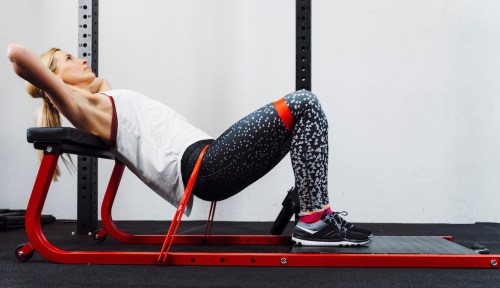The funny thing about being in a good mood is that it doesn’t always make for an extra good workout. But remember all of the times that you rocked your sweat sesh when you were letting out stress or anger? This is because there’s a legit connection between exercise and mood, and it impacts your performance in workouts.
Stress levels are a main reason why your performance can be either helped or hindered. “Stress can be directly correlated to one’s performance in workouts,” says Leah Lagos, PsyD, a health and performance psychologist. But how these emotions translate in your workout tends to differ based on the person, she says.
According to Dr. Lagos, having high stress levels impacts your heart rate variability (or HRV), which is a measure of your autonomic nervous system’s response or how effectively your body addresses and recovers from a stressor. “Individuals with low HRV are more susceptible to illness, psychological conditions like depression, and impairments in their ability to self-regulate. High HRV is associated with a state of resilience, adaptiveness, and better health,” she says. High and low HRV vary from person to person. To note if yours is high or low on a given day, you should continuously monitor your HRV and compare it to a given baseline.
“By measuring HRV at rest, first thing each a.m., you can identify periods of stress and lack of recovery, which help to guide you on how to plan your day and optimize your health,” she says, adding that HRV training, from a fitness perspective, can improve your physical resilience, give you greater control over your nervous system, and enhance cognitive control. While monitoring HRV can be a behind-the-scenes look at how your body is responding to fluid stress throughout your life—which can help to inform when to put the pedal on the gas and when to break—there’s also truth to the fact that immediately put you in a better frame of mind.
Researchers have found that exercise immediately results in a rush of dopamine, norepinephrine, and serotonin to the brain. This can help to explain why exercise is so frequently studied in regards to anxiety and depression, for which studies have found it to be a key way to help biologically boost your mood. Most recommend 30 minutes of activity equivalent to brisk walking each day.
Kensa Gunter, Psy.D., a licensed clinical and sport psychologist with the Association of Applied Sport Psychology, credits your mood’s impact on athletic performance to the mind-body connection. “Our mental state affects our physical state and vice versa,” she says. “There are times when we are feeling intense emotions, like stress or frustration or feeling overwhelmed, and use physical exercise as a way to release that. This feels good physically, and engaging in some kind of activity can also provide an emotional or mental release.”
But not everyone has better workouts when their emotions are intense. “Your mood prior to activity looks different for everyone,” says Dr. Gunter. “Some can be in a good mood and exercising adds to it, or others can be having a rough day and going for a run or swim or even just walking outside can help to elevate their mood.”
In other words, mood serves as a motivator in different ways for everyone, but we do know that research backs up the fact that exercise releases a cocktail of feel-good emotions, spikes endorphins, and gets you into the fresh air, which are all known to have a great impact on plummeting stress levels. “The quality of your workout is not exclusively dependent on how you feel before,” says Dr. Gunter. “You could be sad, stressed, anxious, or happy, but once you get into the workout, as long as you’re fully present, you’ll yield the positive emotional benefits of the experience.” In other words, to borrow a phrase: Just do it.
Sign Up for Our Daily Newsletter
Get all the latest in wellness, trends, food, fitness, beauty, and more delivered right to your inbox.
Got it, you've been added to our email list.











